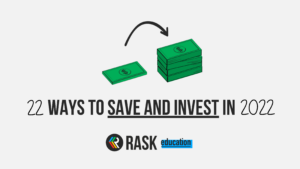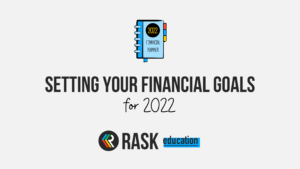This is a concise explainer on what dividend reinvestment plans (DRPs) are, the pros and cons of DRPs, and what to consider when you are choosing between dividends paid out as cash payments or as new shares.
In Australia, many investment options (e.g. shares, ETFs, LICs) pay dividends (or distributions), which are a return of company profits to shareholders. Basically, if you own shares of a company and it’s making a consistent profit, the board of directors may choose to return some of that profit to you (the shareholder/unitholder) as a cash payment.
Using a DRP
One key feature to watch out for is whether the company or ETF offers a DRP, or Dividend Reinvestment Plan. This is an option where you can choose to receive additional shares/units in your investment, rather than receiving a cash payment. This is a hands-off way to grow your investments over time and take full advantage of the effects of compounding.
How do I select a DRP?
To ‘turn on’ a DRP (if it’s available), you will need to head over to the relevant share registry for your share/ETF (e.g. Computershare or Link Market Services) and select the DRP option. This means that any future dividends issued will be paid to you, in the form of additional shares or units, depending on the product.
How do I find my share registry?
In Australia, Link and Computershare are the biggest registries — but there are others and it will depend on the company/ETF you have invested in. If you have received paperwork from your shares or ETF take a look at that because it’ll tell you who the registry is and where to go to register for a DRP.
You can find your share registry by following any of these steps:
- Visit the website of the company or ETF you’re invested in and find their ‘shareholder section’ or ‘investor relations’ section. Search this section of the website, it will tell you who the registry is and what steps to take.
- Read the company’s annual report (hint: use CTRL+F to search the document for ‘registry’). It’s usually written at the start or end of the annual report.
Never give out your CHESS and HIN (holder identification number) unless you’re certain the company is legitimate.
The invisible investing angel on your shoulder
What are the advantages of using a DRP?
The advantages of using a DRP for investing are as follows:
- You won’t pay brokerage on the additional shares/units issued under the plan.
- It’s a way to automate and keep reinvesting the income you receive on a regular basis.
- Grow your investment over time and take full advantage of the effects of compounding.
- There may be a potential discount to the share price on the shares/units issued under the plan.
What are the disadvantages of using a DRP?
The disadvantages of using a DRP for investing are as follows:
- It can be more complicated for record-keeping purposes, as you need to keep on top of your shares and their cost base for capital gains tax (CGT) purposes.
- You have no control over the price at which the shares/units are allocated to you.
- You do not receive the cash dividend, which you may need to supplement.
- If the share price is quite high and your dividend is less than that amount, you will not be issued fractional shares/units. Instead, the registry will hold onto your fractional entitlement and roll it over until the next DRP allocation.
Do I pay tax on shares if I use a DRP?
You should keep in mind that no matter whether you choose to use a DRP or to receive your dividends as cash payments, the income from your investments will be taxable (and the share registries report this data to the ATO). And here you were thinking you could get away with it…
[ls_content_block id=”27643″ para=”paragraphs”]



